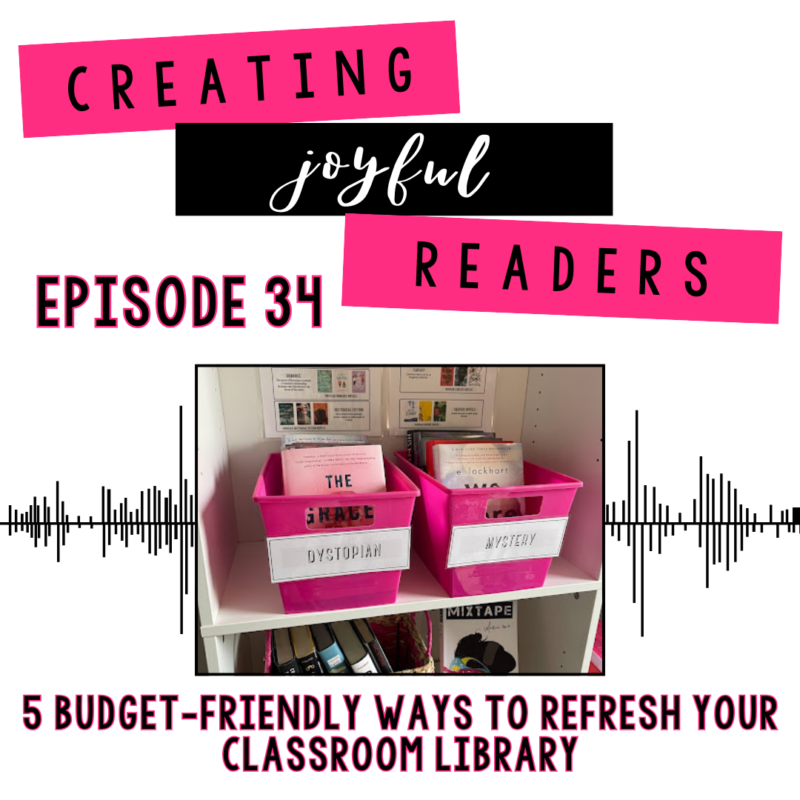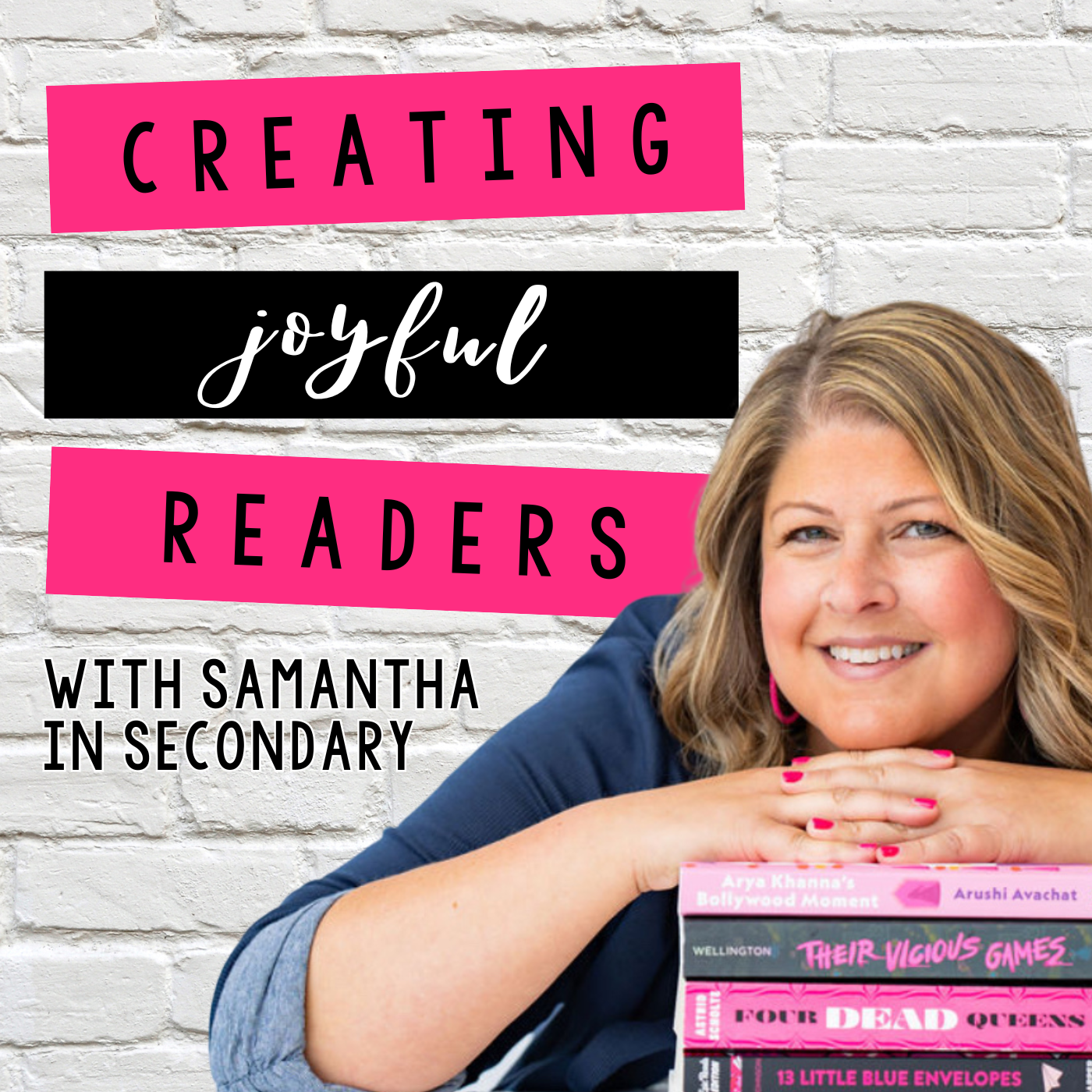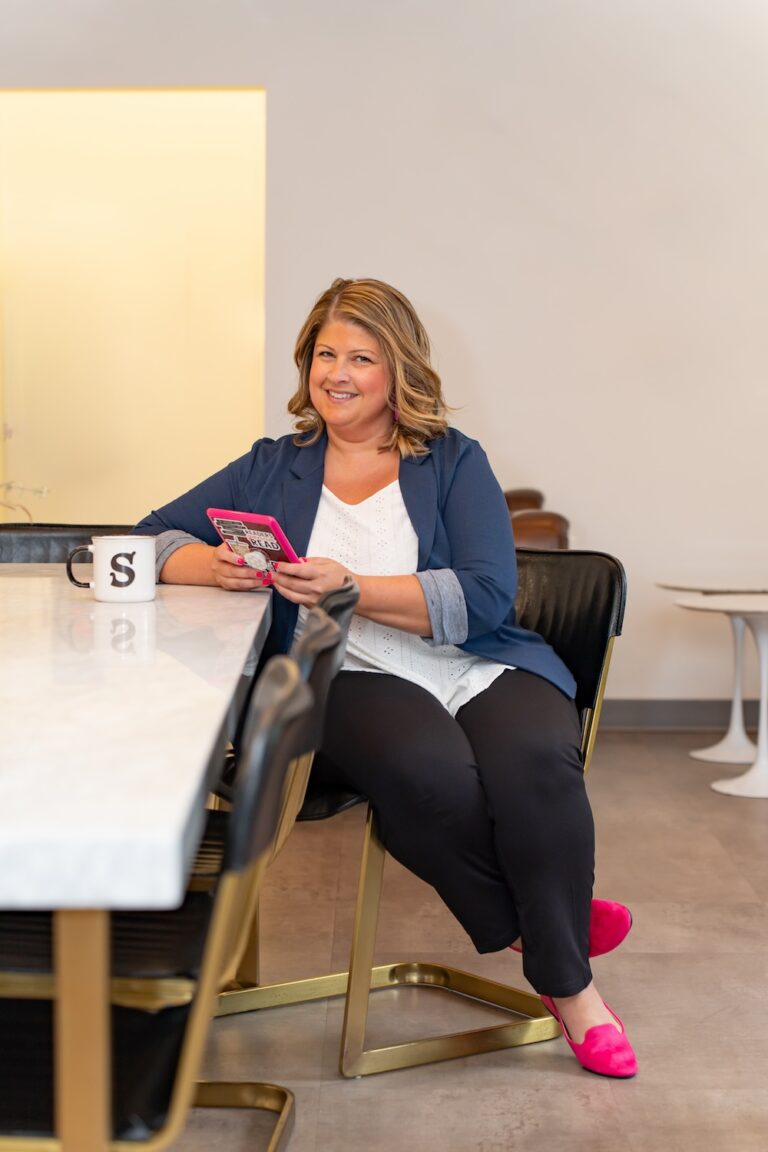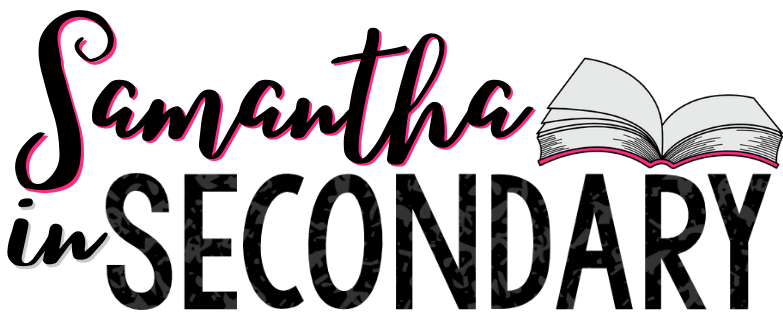[00:00:00] Samantha: Welcome back to Creating Joyful Readers, the podcast that helps secondary ELA teachers inspire students, build engaging reading experiences, and create classrooms that keep books front and center. Today we’re talking about something every teacher who loves books can relate to – building and refreshing your classroom library.
[00:00:59] Now, I’ll be honest, when I first started teaching, I wasn’t totally convinced that a high school classroom needed a classroom library. I figured the school library was enough, and if students wanted a book, they could find it there. But as I started growing my own collection, I quickly saw the impact a well-stocked, accessible classroom library had on my students.
[00:01:19] Having books within arm’s reach made reading easier, more inviting, and more natural. I noticed that students who rarely checked out books from the school library were more willing to pick up something when it was right in front of them. The challenge though, building a classroom library can be expensive.
[00:01:34] So in today’s episode, I’m sharing five practical and budget friendly ways to stock your shelves, along with some of my own favorite strategies that help me create a diverse and engaging collection of books without breaking the bank. Whether you’re starting from scratch or just looking to refresh your library with new titles, this episode is packed with ideas to help you build a literary haven for your students. Let’s get started. My first tip is to make friends with secondhand stores. If you haven’t already explored secondhand stores for books, you are missing out on one of the best budget friendly ways to grow your collection.
[00:02:08] Places like Goodwill, thrift stores, and consignment shops often have entire shelves of gently used books. Sometimes for as little as 50 cents to a dollar, I found popular YA books, classroom staples, and even brand new hardcovers at a fraction of their original price. But here’s the trick. You have to check often. Most secondhand stores are constantly replenishing their stock. So if you don’t find what you’re looking for on the first time, try again in a few weeks. And if goodwill isn’t an option in your area, look into other discount bookstores like Second and Charles, Half Price Books, or Ollie’s.
[00:02:42] Even places like garage sales and estate sales can have hidden gems if you know what to look for. Bonus tip, keep a list of books your students love on your phone. That way when you stumble upon a secondhand book sale, you know exactly what to look for. And you probably know this by now, but I have a list of 100 YA books you can grab for free on my website.
[00:03:02] Just go to Samantha in secondary.com and click on reading. My second tip is for those who prefer the convenience of online shopping. There are so many places to find affordable books without paying full price. I personally love Facebook Marketplace and buy nothing groups. These are gold mines for finding books at little to no cost.
[00:03:23] If you’re not already a member of local Facebook groups, now is the time to join. You’ll often see people giving away stacks of books, and you can even post a request saying that you’re a teacher looking for classroom donations. Other great options. Used book websites. Some of my favorites include AbeBooks, PangoBooks, ThriftBooks, and Half Price Books.
[00:03:44] And let’s not forget Amazon. The used section can sometimes reveal major discounts on books that look almost brand new. Bonus tip, if you’re part of a teaching community or online forum, swap books with other educators. I’ve traded books with fellow teachers before and it’s a great way to refresh your collection without spending a dime.
[00:04:03] For my third tip, we’re going to talk about soliciting donations. You might be surprised at how generous people are when it comes to books, but the key is knowing where and how to ask. One of the best ways to get classroom books funded is through donors choose. I’ve personally had class sets of novels funded through this platform, and there are donors out there specifically looking to support literacy projects.
[00:04:24] If you’ve never created a project before, it’s definitely worth checking out. Another option, create an Amazon wishlist. Once a year, I used to post my own book wishlist to my family and friends on social media, and more often than not, I would have generous people send me a book or two.
[00:04:40] It’s such an easy way to gather new high interest titles for your students. Bonus tip, if your school has a parent organization or community sponsors, reach out to them. Many businesses and community groups love donating books to local classrooms.
[00:04:55] Next, let’s talk about library sales. If you’ve never been to a library book sale, you are missing out on one of the best kept secrets for finding cheap books, not only for your classroom, but for yourself. Many local libraries sell books a few times a year, and you can often fill an entire bag for just a few dollars.
[00:05:13] The last time I went, I walked away with two huge bags for $14, and many of them went straight to my classroom library. Bonus tip, call your local library and ask when their next sale is. Some even have teacher appreciation days where educators get an additional discount or first pick of the books. Last but not least, we’re talking about book grants.
[00:05:33] Yes, there are grants specifically for teachers to build classroom libraries. A quick Google search can help you find book grants for educators. And while some require an application, the payoff is so worth it. Some well-known options include The Book Love Foundation, grants for classroom libraries, started by teacher and author Penny Kittle. The Snapdragon Book Foundation focuses on giving books to teachers in underfunded schools, and the Laura Bush Foundation for America’s Libraries, grants for expanding classroom and school libraries. Applying takes little effort, but if you win just one grant, it can provide hundreds of dollars in books for your students.
[00:06:08] Refreshing your classroom library doesn’t have to be overwhelming or expensive. By shopping secondhand, looking online, asking for donations, scouting library sales, and applying for grants, you can build a diverse and engaging collection that keeps students excited about reading. And if you’re looking for fresh YA book recommendations, I’ve got you covered. You can grab my free list of 100 must read YA novels by signing up for my secondary ELA email list. It’s packed with teacher curated student approved books that your readers will love. You can go to Samantha in secondary.com and click on reading or check the link in the show notes. And as always, I’d love to hear from you. What are your best tips for building a classroom library? Come chat with me over on Instagram at Samantha in secondary, or drop a comment on my latest post.
[00:06:54] Let’s share ideas and keep building classroom libraries that inspire our students. Until next time, happy reading.







